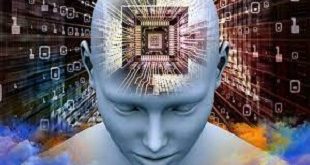Presentation
In the early long stretches of the 21st hundred years, a mechanical peculiarity arose that would everlastingly change the scene of money, business, and then some. Blockchain, the basic innovation of cryptographic forms of money, burst onto the scene, presenting an original worldview of decentralized and straightforward exchanges. This article dives into the many-sided universe of blockchain and cryptographic forms of money, following their development, investigating their mechanical establishments, applications, challenges, and the significant effect they’ve had on the worldwide economy.
I. Beginning of Blockchain and Digital currencies
A. The Introduction of Bitcoin
The story starts with the strange figure known as Satoshi Nakamoto, who, in 2008, presented Bitcoin, the primary decentralized digital currency, through a whitepaper named “Bitcoin: A Shared Electronic Money Framework.” Bitcoin’s historic idea laid on a decentralized record, the blockchain, which offered an answer for the longstanding issue of confidence in computerized exchanges.
B. Blockchain as the Innovative Spine
Blockchain, in its substance, is a conveyed record that records exchanges across an organization of PCs in a protected and straightforward way. Each block in the chain contains a cryptographic hash of the past block, making a changeless and interconnected grouping. This innovation guarantees the uprightness and straightforwardness of exchanges without the requirement for a focal power.
II. The Innovative Underpinnings of Blockchain
A. Decentralization and Dispersed Record Innovation
The center rule of blockchain is decentralization, taking out the requirement for a focal power or go-between in exchanges. All things considered, an organization of hubs cooperatively keeps up with the record. Every hub has a duplicate of the whole blockchain, cultivating straightforwardness, security, and strength against weak links.
B. Agreement Systems
To approve and settle on exchanges, blockchain networks utilize agreement systems. The most widely recognized instrument is Proof of Work (PoW), where members (excavators) settle complex numerical riddles to add another block to the chain. Evidence of Stake (PoS) and other agreement calculations offer elective methodologies, each with its own arrangement of benefits and difficulties.
C. Cryptography and Security
Cryptography assumes a urgent part in getting exchanges on the blockchain. Public and confidential keys, cryptographic hash capabilities, and computerized marks guarantee the privacy and respectability of information. The utilization of these cryptographic methods makes blockchain impervious to altering and extortion.
III. The Ascent of Digital forms of money
A. Bitcoin as a Spearheading Digital money
Bitcoin, with its decentralized nature and restricted supply covered at 21 million coins, established the groundwork for another time of advanced monetary standards. Its decentralized agreement component and pseudonymous maker set up for the multiplication of elective digital currencies.
B. Altcoins and Different Blockchain Stages
Following Bitcoin’s prosperity, various elective cryptographic forms of money, frequently alluded to as altcoins, were presented. Ethereum, sent off in 2015, stood apart by presenting shrewd agreements — self-executing contracts with the conditions of the arrangement straightforwardly composed into code. This development made ready for a large number of decentralized applications (DApps) and decentralized finance (DeFi) stages.
IV. Utilizations of Blockchain Innovation
A. Cryptographic forms of money as Computerized Resources
Digital currencies act as advanced resources and modes of trade, taking into account borderless and permissionless exchanges. Bitcoin, Ethereum, Wave (XRP), Litecoin, and others have become theoretical resources as well as feasible types of advanced money and worth stockpiling.
B. Brilliant Agreements and Decentralized Applications (DApps)
Ethereum’s presentation of brilliant agreements expanded the utility of blockchain past money. Savvy contracts are self-executing concurrences with the terms written in code. They empower trustless and computerized exchanges, bringing about decentralized applications in different areas, including money, gaming, and production network.
C. Decentralized Money (DeFi)
The rise of DeFi denoted a change in outlook in the monetary business. DeFi stages, based on blockchain networks, offer monetary administrations without customary go-betweens. Decentralized loaning, getting, exchanging, and yield cultivating are among the creative applications reshaping the monetary scene.
D. Inventory network and Recognizability
Blockchain’s straightforwardness and unchanging nature make it an ideal answer for inventory network the executives. By recording the provenance of merchandise on a blockchain, partners can follow the beginning and excursion of items, upgrading straightforwardness, responsibility, and effectiveness.
E. Computerized Personality and Casting a ballot Frameworks
Blockchain can address difficulties connected with computerized personality and casting a ballot frameworks. Decentralized character arrangements engage people to safely control and offer their own data. Blockchain-based casting a ballot frameworks expect to improve the trustworthiness and straightforwardness of electing processes.
V. Difficulties and Concerns
A. Adaptability and Exchange Speed
One of the essential difficulties confronting blockchain networks is adaptability. As the quantity of exchanges increments, adaptability becomes pivotal for keeping up with effectiveness and low exchange expenses. Arrangements, for example, sharding, layer 2 scaling arrangements, and agreement calculation enhancements expect to address these difficulties.
B. Administrative Vulnerability
The decentralized and pseudonymous nature of blockchain and digital currencies has presented difficulties for controllers. Various wards have differing ways to deal with blockchain guideline, prompting a complex and developing lawful scene. Lucidity and harmonization of guidelines are fundamental for the more extensive reception of blockchain innovation.
C. Security and Protection Concerns
While blockchain is commended for its security highlights, weaknesses can in any case exist. Brilliant agreement bugs, 51% assaults on PoW organizations, and protection concerns connected with public records are among the security challenges. Progressions in cryptography and continuous security reviews expect to relieve these dangers.
VI. The Effect on Customary Businesses
A. Banking and Money
The monetary area has been significantly impacted by blockchain and cryptographic forms of money. Conventional financial cycles, including cross-line installments and settlements, face disturbance from decentralized other options. National banks are investigating the idea of national bank computerized monetary forms (CBDCs) as a reaction to the ascent of computerized resources.
B. Cross-Boundary Exchanges
Blockchain’s capacity to work with close moment, practical, and straightforward cross-line exchanges has gathered consideration from monetary organizations and organizations. Wave’s XRP, for example, is planned explicitly for empowering quicker and less expensive worldwide exchanges.
C. Land
The land business is investigating blockchain for property exchanges, title the executives, and tokenization of land resources. Blockchain’s straightforwardness can diminish extortion and smooth out complex cycles in land exchanges.
D. Medical care
Blockchain’s safe and straightforward nature holds guarantee for medical services applications. Patient information the executives, store network recognizability for drugs, and interoperability of wellbeing records are regions where blockchain is making advances.
VII. The Eventual fate of Blockchain and Cryptographic forms of money
A. Development of Blockchain Organizations
Blockchain innovation keeps on advancing, with progressing innovative work zeroed in on further developing versatility, interoperability, and maintainability. The progress from PoW to PoS and the investigation of new agreement instruments mirror the business’ obligation to tending to the restrictions of current blockchain networks.
B. Joining of Blockchain with Arising Advancements
Blockchain is progressively being coordinated with other arising advancements, like the Web of Things (IoT), computerized reasoning (man-made intelligence), and 5G. These cooperative energies open up additional opportunities for creative applications and improve the general productivity of decentralized frameworks.
C. National Bank Computerized Monetary forms (CBDCs)
A few national banks are investigating or directing CBDCs as a computerized type of government issued money. CBDCs influence blockchain innovation to give national banks new devices for financial strategy and proposition a digitized option in contrast to actual money.
D. NFTs and the Computerized Economy
Non-fungible tokens (NFTs) definitely stand out as remarkable computerized resources addressing responsibility for content. From computerized craftsmanship to virtual land, NFTs are reshaping the advanced economy, giving new roads to makers and gatherers.
VIII. Social and Moral Contemplations
A. Monetary Incorporation
Blockchain and digital currencies can possibly offer monetary types of assistance to the unbanked and underbanked populaces, encouraging more noteworthy monetary consideration. Decentralized finance stages and blockchain-based installment frameworks can offer options in contrast to conventional banking in locales with restricted admittance to monetary administrations.
B. Natural Manageability
The energy utilization of PoW blockchain networks, eminently Bitcoin, has raised worries about ecological manageability. Conversations around changing to more eco-accommodating agreement components and energy-productive options mean to address these worries.
IX. Public Discernment and Reception
A. Moving Standards in Money
Blockchain and digital currencies have tested conventional thoughts of money and abundance the executives. The account of decentralization, monetary power, and the potential for disintermediation has reverberated with people looking for options in contrast to customary monetary frameworks.
B. Instructive Drives
Instructive drives and mindfulness crusades assume a significant part in molding public view of blockchain and digital forms of money. Stages, courses, and instructive assets mean to enable people with the information expected to explore the intricate universe of decentralized advances.
End
The ascent of blockchain and digital currencies addresses a change in outlook in the manner in which we contemplate trust, worth, and exchanges. From the spearheading long periods of Bitcoin to the far reaching biological system of blockchain applications, the excursion has been set apart by innovative forward leaps, administrative difficulties, and extraordinary effects on customary businesses. As we stand at the slope of a decentralized unrest, the ramifications of blockchain and digital currencies stretch out a long ways past monetary business sectors. They offer a brief look into a future where decentralized innovations rethink the manner in which we execute as well as how we coordinate, oversee, and collaborate in our undeniably digitized world. The excursion is continuous, with proceeded with advancement, administrative development, and cultural variation molding the direction of this groundbreaking power in the years to come.


